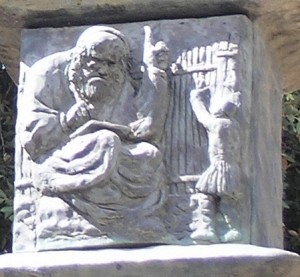Iraq and the Jewish People: The Geonic Era
Part VIII
The period known as the Geonic Era ranged from 650 to approximately 1050. The leaders of the great yeshivas of the time, such as Sura and Pumbedita, were called Geonim. The Geonim began to gain power in this period and the exilarchs became less powerful, in essence becoming secular leaders of the people while the Geonim led.
During the first century of Moslem rule, there was a centralized caliphate, and the Jews found themselves living in the center of Islamic life. This was especially true after the year 750, when Baghdad was established as capital and the yeshivas moved to the area. The Jews were thus able to use the political power they accrued living in the capital to disseminate Judaism as they understood it—the Judaism of the Babylonian Talmud—to the Jewish world under Islamic domination. The dissemination of Judaism continued after the breakup of the Islamic period. Though the Arab Empire had begun to deteriorate, the rabbis in Baghdad were still permitted to send responsa all over the world and to collect money for yeshivas, remaining the central location of Jewish learning.
During the Geonic period, the Babylonian Talmud was established as authority. It was communicated to the Jewish world, and Jewish thought and philosophy developed under the influence of Islam. Amram Gaon (856–74) edited the first siddur; Saadia Gaon, who lived from 882 until 942, edited a siddur soon afterwards. Saadia Gaon wrote his famous philosophical work having learned Greek philosophy from Arabic translations and commentaries, making the first attempt at creating a philosophic synthesis. Saadia Gaon was also involved in writing systematic works of Hebrew grammar and translating the Bible into Arabic. Rav Sherira Gaon (d. 1005) wrote a history of the period in the year 987 in which he listed all Geonim, heads of the two yeshivas, from the Mishnah’s earliest stages until his time.
All of this intellectual activity was stimulated by the open environment in which Islam had Hellenized. Judaism, a protected minority under Islam, grew and developed intellectually, physically, and economically. The Moslems in the region helped to usher in a golden age in which Jews could attain high political and economic positions.
This ground to a halt with the decline of Iraq. The combination of the breakup of the Islamic Empire into warring states and the subsequent economic and political decline affected the development of the Jews. The Mongols destroyed the area in 1258 ending what was known as the Abbasid caliphate. Jewish officials and citizens were killed in riots.


Leave a Reply